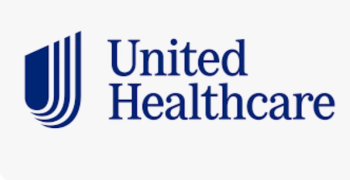
Four Ways Healthcare Executives Can Reduce Patient Leakage
Four things healthcare executives need to know about patient leakage, and four ways they can fix it.
While the importance of growing your patient base is nothing new, thinning margins for hospitals have put the issue of patient leakage on the executive radar. It’s only within the past eight years or so that healthcare providers have come to understand how managing referrals across a network is a linchpin to controlling costs, defending margins, and improving patient care quality under value-based care.
Here are four things healthcare executives should know about patient leakage, and four ways they can fix it:
Four Things to Know
1. There’s a gap between priority and action.
Almost nine out of 10 healthcare executives see patient leakage as critical to their organization, according to a
2. Failing to manage leakage has a high financial and clinical cost.
An analysis of a five-hospital integrated delivery network with a 700-physician medical group, 50 outpatient clinics, and $5.5 billion in revenue found that 80% of out-of-network referrals were due to a lack of understanding of the ACO network. A visual analysis of referral patterns using Fibroblast’s data tracking tools identified $27 million in leaked referrals. This was also reflected in the Sage Growth Partners survey findings, which showed 43% of respondents are losing more than 10% of annual revenues to leakage.
3. Staff are impactful, yet unseen influencers.
Every day, patients walk out of the hospital door and either do nothing with their referral, or they go across the street to a competitor. The net effect is that patients don’t receive the potentially lifesaving care they need, and healthcare organizations lose revenue. As value-based care increases, the disastrous impacts of this pattern will only intensify.
4. Patient leakage has several root causes.
Survey respondents attributed patient leakage to a variety of factors, but the No. 1 reason cited was physician referral based on personal relationships and not having an objective process for referrals. It’s important to note that though this was the survey respondents’ perception, an internal analysis of Fibroblast client data indicates that 80% of the time, providers neglect to even specify who a patient should see. At the same time, 60% of survey respondents said they don’t even follow up to see if patients received the care for which they were referred.
Four Things to Do
So, what can be done? Here are four takeaways for managed care executives:
- Understand historic referral patterns. Organizations need to first understand their historic referral patterns by analyzing claims and EHR data. While 38% are using their EHR to do this, it’s often not sophisticated enough to crunch all the data together in a coherent way. The majority of these survey respondents were either dissatisfied (19%) or only somewhat satisfied (57%) with their EHR’s performance.
- Take a data-driven approach to guide referrals. A good way to decide where to begin is to look at the data and ask: What can I actually impact right now? What type of leakage is avoidable and addressable? Next, organizations need to take subjectivity out of the equation and use a data-driven approach to guide referrals to the best possible care option, so they’re meeting the patients’ and the hospital’s needs.
- Use predictive modeling to understand consequences to future referral patterns. Organizations can future-proof their referral management by using predictive modeling to understand how fixing the referral pattern today may change future referral patterns. It’s important to analyze how changes will impact care delivery across service lines, patient flow, and contracting with providers and payers.
- Make it an overall strategic priority and topic of conversation at the executive level. Patient leakage tends to get caught in a game of not-in-my-backyard between executives – it’s a multi-faceted issue lacking a key point person. While organizations need to make patient leakage a strategic priority and tackle it with a multi-skilled team, leadership at the top needs to take the reins and drive change management in this area.
As organizations take on more risk, they must build and manage high performance referral networks to control costs and demonstrate quality. Tracking and understanding referral patterns gives stakeholders the visibility they need to control the causes of patient leakage, significantly impact patient health, and protect the bottom line.
Scott Vold is the co-founder and CEO of Fibroblast, a cloud-based referral management platform. He writes and speaks on topics including enterprise leakage reduction, healthcare information technology innovation, and entrepreneurship. Scott graduated from the Washington University School of Law, after receiving a BA from the University of Illinois.
Newsletter
Get the latest industry news, event updates, and more from Managed healthcare Executive.






















































